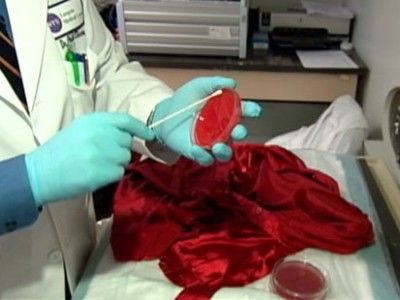If you’ve read some of our past articles, you know that daily life in our world can be a gauntlet of toxin sources—and that some of them are sneakier than others.
By now, you’ve probably educated yourself about the dangers of conventional produce, meat, dairy products, and processed foods. You probably know about water contaminants, environmental pollution, radiation, and even the toxin sources that are lurking in your own home.
Being savvy about the toxicities of the modern world can help you improve your health and longevity dramatically, but it can also leave you wondering whether there’s any safe haven.
But have you considered your newly purchased clothing?
They can’t possibly pose any dangers to your health, right? Especially brand new clothes, with their pristine appearance and packaging.
Sadly, independent testing has revealed that this belief is an illusion.
Chemical-laden clothing
Some clothing is toxic before it’s even made. This is because 85% of men’s clothing and 60% of women’s clothing contains cotton,[1] which also happens to be the world’s “dirtiest” crop. Conventionally produced cotton is grown with heinously toxic insecticides like aldicarb, parathion, and methamidopho, which often remain in cotton clothing and can seep into the skin.
Aldicarb in particular is so toxic that a single drop absorbed through the skin can kill you—and yet it’s still used to grow the very material out of which most of your clothing is made.[2]
And the contamination doesn’t stop there. Conventional cotton producers use poisonous herbicides to defoliate their plants, and then subject the plant material to a staggering array of chemicals in order to whip it into saleable shape.
They bleach it, dye the fabric with toxic azo-aniline coloring agents, stain-proof it with perfluorinated compounds, or PFCs (yes, the same ones that are in famously toxic non-stick cookware), fire-proof it with the same poisons that are probably making your living room toxic, wrinkle-proof it with formaldehyde, and even throw in nonylphenol ethoxylate (NPE) and many other chemicals that are known carcinogens or endocrine disruptors to complete their product.
Conventional clothing manfucturers even treat their products with triclosan, an antimicrobial agent strongly linked to infertility and other reproductive issues, altered hormone regulation, increased cancer risk, and antibiotic resistance.[3]
But at least our clothing is nice and sterile, right?
Wrong.
You’d think that with all those chemicals ingrained into conventionally produced clothing, no pathogens or other microbes could possible survive—but nothing could be further from the truth.
Philip Tierno, Ph.D., Director of Microbiology and Immunology at New York University, ran tests on clothing purchased from chain stores across the country. What he found was rather shocking: feces, respiratory secretions, skin flora, vaginal yeast—essentially the full gamut of microbes that could end up on clothing that’s been tried on by many people before being purchased.
He found plenty of germs too, including hepatitis A, MRSA, salmonella, norovirus, streptococcus…even lice and scabies.[4] While he admits that most people with a moderately healthy immune system would be able to avoid being adversely affected by any of these contaminants, he still advised being cautious with newly purchased clothing.
After all, your body has plenty of other toxin sources and pathogens to worry about —make things easier on yourself by doing everything you can to ensure that your clothing isn’t a hazard to your health.
Don’t be afraid of your clothes…just take precautions
First and foremost, it’s incredibly important that you seek out organic cotton clothing (or clothing made from other organic, health-conscious, and eco-friendly fabrics, like hemp and bamboo).
Organic cotton avoids all the pesticide and herbicide problems discussed above, and most products that fall under this label should be free from other manufacturing chemicals too.
The only way to be sure that your clothing was manufactured without all those chemicals, though, is to look for the OEKO-TEX Standard 100 label (in addition to that which certifies that it’s made with organic cotton or a similar material).
Smaller, boutique clothing companies (as opposed to the huge manufacturers that supply chain superstores) are much less likely to soak their products in endocrine disruptors and other noxious chemicals.
Regardless of where you buy your clothes, though, always wash them at least once, if not twice, before wearing them. If they’re not machine-washable, have them dry-cleaned, or put them through a hot dryer cycle.
By following these simple practices, you can minimize the health risks from one of the most fundamental aspects of your life. Eat cleanly, drink purified water (not bottled water), and de-toxify your home, and you can rest assured that you’re getting all your basic needs met in a toxin-free manner.
References
[1] http://www.cottoninc.com/fiber/quality/Fiber-Management/Fiber-Management-Update/05-Sept-2011/
[3] http://www.ncbi.nlm.nih.gov/pubmed/16922622
[4] http://abcnews.go.com/GMA/gma-found-clothes-clean/story?id=9482373






